But what about this odd English word nun? There are a few possible origins for the word nun. Appearing in the Old English as nunne, it is generally derived from the late Latin nonna meaning “nun” or “tutor,” along with the masculine nonnus meaning “monk,” “tutor.” These words in turn are commonly believed to be related to the Greek nanna meaning “aunt” or nónnos meaning “father” and the Persian or Proto-Celtic nana meaning “mother” and “grandmother” respectively.
The words Friar and Pope likewise appear to develop as simple familial metaphors akin to the etymological meanings typically ascribed to nun. Indeed, the word friar is typically believed to trace to the Latin frater meaning “brother.” Pope is understood as derived from the Greek papas meaning “patriarch” or “bishop” and originally “father.” Priest is commonly traced to the Greek presbyteros meaning “elder.”
The word bishop is commonly derived from episkopos meaning “watcher” or “overseer.” The word monk in contrast is commonly understood as ultimately deriving from the Greek monos meaning “alone.” Here the solitary or hermetic nature of the monk is suggested. In fact, the Old English munuc from which the word monk more recently derives was used to refer to females as well.
Theoretically, the word nun is ultimately related to the name of the Sumerian moon God Nanna/Sin or his daughter Inanna. Here we may find one of the earliest traceable roots of the word from an element appearing in Inanna, (nin), meaning “lady” or “lord.” Inanna is commonly thought to mean “Heaven Lady” or “Lady of Heaven.”
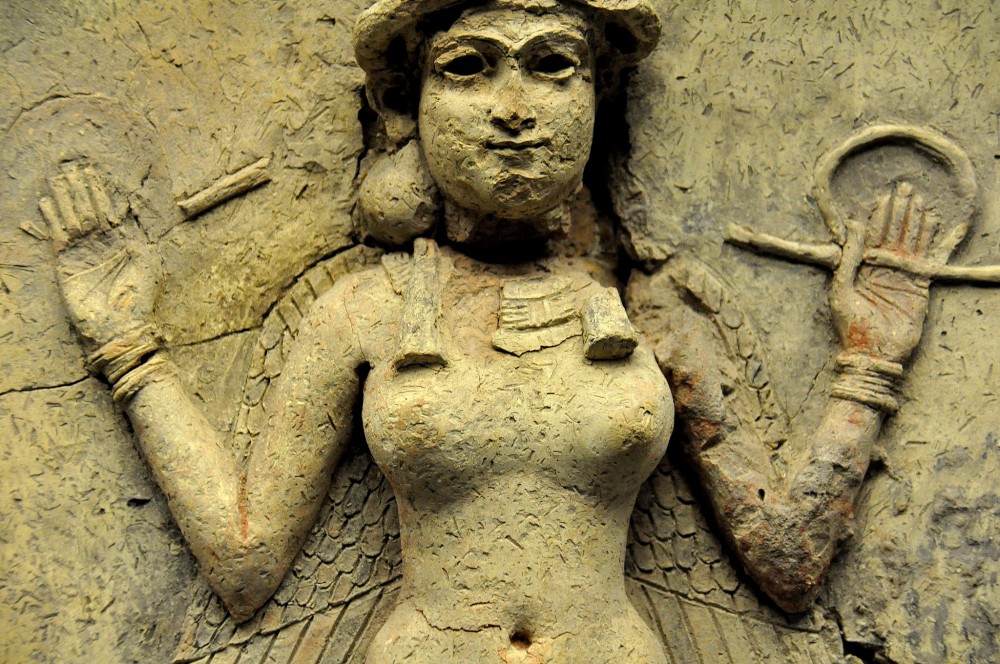
Etymologists argue that the God name Nanna is obscure in its original meaning but it seems possibly if not likely related to Inanna. In fact we might reasonably suggest the meaning of “lord” for the name Nanna. Again, I have asserted that the nun may have functioned, originally, as something closer to the priestess of Nanna/Sin.
In other words, this is to argue the nun was perhaps originally a de facto concubine or “companion” for Christian priests or monks, much as Magdalene appears to have been the sexual consort of Christ. In general, it seems possible, if not probable, that the first priestesses developed originally in Mesopotamia as temple prostitutes and/or sacralized breeding stock.
The priestesses of Nanna were women, the historical record and myth suggest, born from Semitic fathers or “Dumuzids” and Aryan mothers or “Inannas.” In any case, a shared symbolism tells us that Christianity and Judaism ultimately descends from the Dumuzid cult which appears to represent something of a root cult.[1]
The Goddess Inanna is pre-dated by an earlier Goddess, Nanaya also transcribed as “Nanâ.” Nanaya a sky Goddess, like Inanna, we might class as an Aryan archetype. Like Inanna, she was a rough equivalent of the later Venus. Nanaya’s was a successful cult, gaining currency in both Mesopotamia and Egypt. Nanaya will later be syncretized as an aspect of Inanna.
In fact that Nanaya and Inanna are Aryan figures, may suggest the roots nanna, nana and even the derivative word nun as Aryan identifiers. This will be suggested by other clues we explore in this chapter. On the other hand, we will class the lunar Sumerian God Nanna/Sin Semitic.
Perhaps it is meaningful Nanna begins as a Sumerian deity and is later syncretized with Sin, a God of the Semitic-speaking Akkadians. Nanna/Sin descends of a likely Semitic Enlil and an Aryan Ninlil. Ninlil, believed either to mean “Lady of the wind” or “Lady of the field” contains the same element found in Inanna, nin, meaning “lady.”
Here Nanna/Sin’s fatherhood of Inanna, this study argues, does not suggest her as Semitic any more than Saturn’s fatherhood of Jupiter suggests Jupiter Semitic. Rather, more likely, Nanna/Sin’s distinction as father indicates Semitic rulership. Here a lunar God presides over the solar God Shamash and his sister Inanna.
The word nun may also be related or traced to the Phrygian Goddess Nana, appearing in Greek Mythology. She is the mother of the Rising-and-Dying God Attis, himself among the Rising-and-Dying Gods that would go on to inspire Christ, if with less visible influence than figures like Adonis and Bacchus. She is also the daughter of the river-god Sangarius which may suggest her Aryan, as freshwater in particular appears to be connected to Aryan blood.
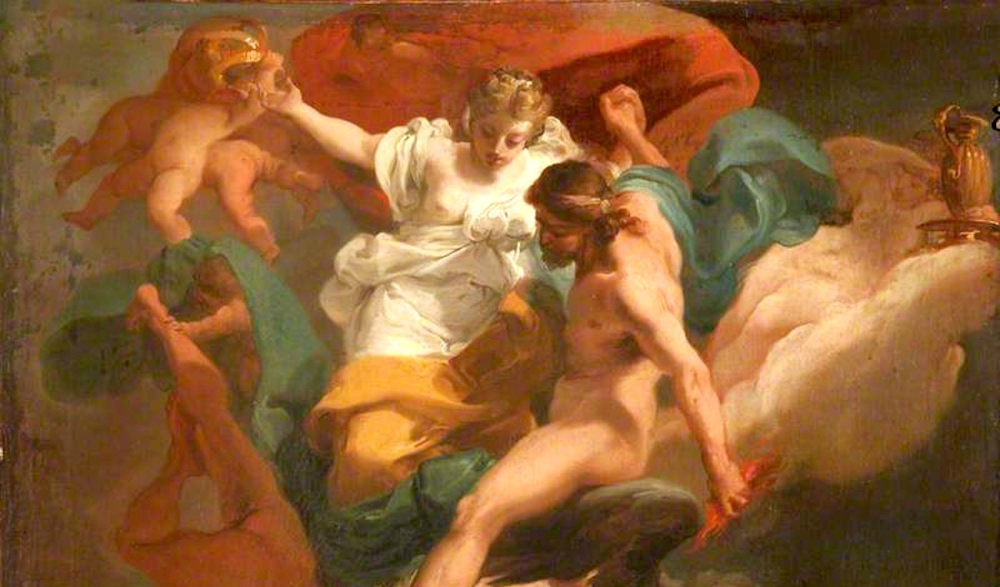
For example, the Christ Baptism scene in the Jordan river, this study argues, symbolizes the admixture of a Jew with an Aryan female figure. Here the female figure is represented by both the river and a descending dove or “Holy Spirit.” In light of this idea of Aryan blood being represented by fresh water it is worth contemplating if the name of the river-god Sangarius, ostensibly derived from another mythical figure named Sangas[2], is related to the later Latin word sanguis meaning “blood.” Sanguis, which would become the root of the English words sanguine and sanguinary, is of unknown origin.
In any case, Nana, like the nun herself, is in some manner a Mary equivalent. Like Mary, impregnated by an almond that falls in her lap, ostensibly Nana might be classed a virgin mother. Regardless, the appearance of the word nunne in the Old English, or nonna in the Late Latin, could have been a conscious development appearing via Promethean Transmission with the idea of an ancient Aryan nanna, “mother” or “lady” in mind.
The possibility that the word nun is a conscious esoteric develop is, of course, supported by the sexual and ethnic innuendos found in key Religious words like Messiah, Christ, [3]Jesus, Sin,[4] Easter,[5] Galilee,[6] Bethlehem[7] examined throughout this study. More such examples are found among medieval church terms explored in this book including Tabernacle, Transept, Narthex, Gallery and Galilee. Again, Christian esotericism certainly does not end with the Greek and Hebrew scripture.
Developments in Old Norse language and mythology likewise may suggest nonna, nunne or nun as consciously developed. Specifically, in Norse Myth, we find the Goddess Nanna, female consort of the Dying-and-Rising Balder. This study argues that Norse Mythology is largely an example of Promethean Transmission occurring during the medieval period and, possibly, like the runic writing, “Etruscan,” proto-Jewish or crypto-Jewish in origin.
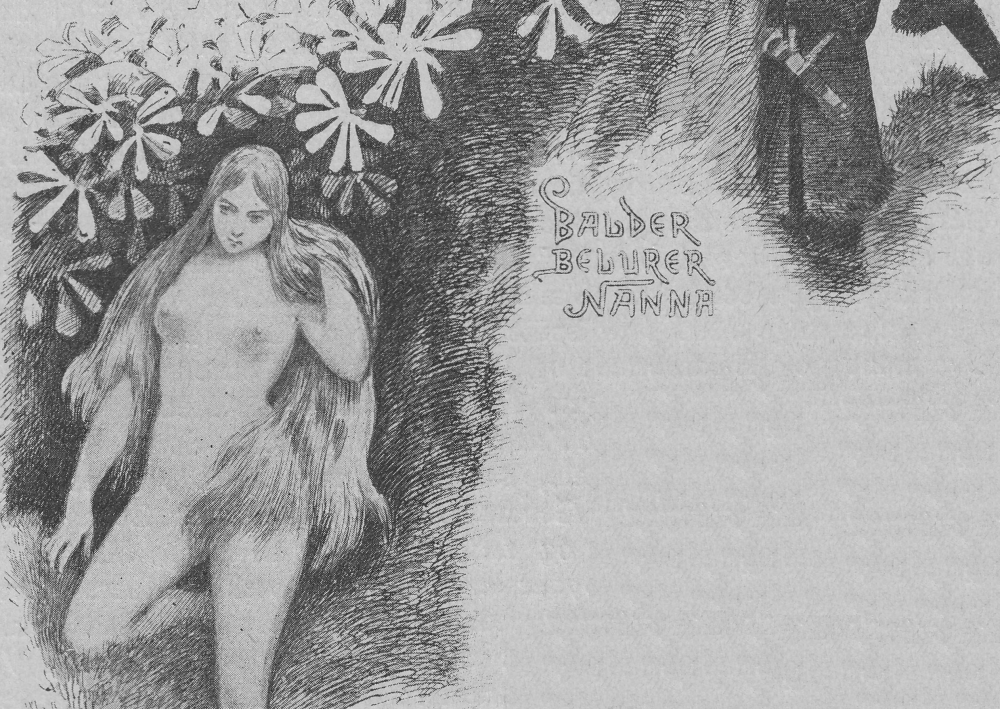
Symbolically the Nanna/Balder pairing is identical to the Nun/Christ pairing when we understand the nun as symbolically married to Christ. Indeed, this study argues that Balder was intelligently developed as a reference to Jesus Christ, if also earlier Dying-and-Rising Gods like Adonis. Hence Balder’s similarities to Christ did not develop “unconsciously.”
If Nanna in the Norse myth is a “borrowing,” it is likely not the only one. For example the name of the Sun Goddess Sól appearing in the Norse Pantheon is commonly suggested to derive from the same Indo-European Root as the male God Sol appearing in Roman symbolism.
Perhaps more likely though the Goddess Sól is simply a use of the Latin word Sol, meaning sun, if not also a feminization of the Roman God Sol. Likewise Hermóðr, the Son of Odin and messenger of the Gods, who retrieves Balder from Hel after his death, seems etymologically related to the Greek God Hermes, if not a clear reference to him. After all, his role here as psycho-pomp or guide of souls is the same as Hermes.
The Egyptian God Nu or Nun of ancient Egypt may also arise from a common etymological root. Nun, the oldest of the Egyptian Gods, was a male, birth-giving oceanic, watery abyss who also had the feminine form, Naunet. Here, again, we understand water, even oceanic waters as a relatively feminine element at least when compared with celestial elements, yet nevertheless an Aryan element with salt representing an inseminating Semitic element.
Hence perhaps a “Sea of the West” metaphor, as is perhaps found with Mary[8] (“sea of bitterness”) and the sea-born Venus, is continued here. This may be especially likely based on references appearing in the Hebrew Bible where Joshua is understood as the son of an Egyptian named “Nun.”
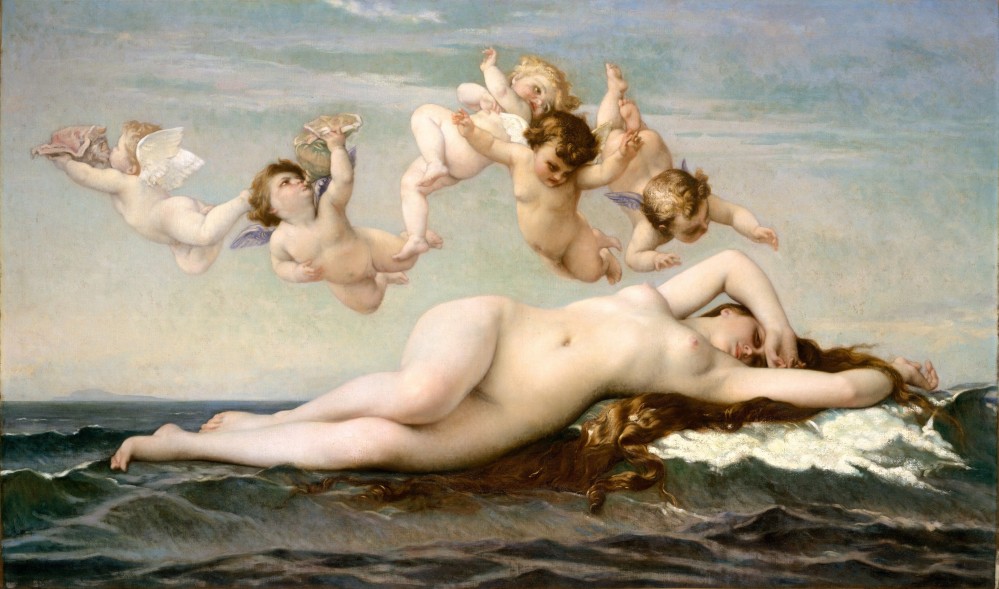
This study argues that Nun in the Hebrew Bible is indeed a reference to the Egyptian God based on deliberate references to this God appearing in the Book of Joshua, for instance. This study also argues that the name Jesus is intended as a reference to Joshua as both names are, in fact, the same name. Both are derived from the Hebrew Yehoshua.[9] Hence to the extent the nun becomes a symbol for Mary, the mother of Jesus, she might also be understood as Nun, parent of Joshua.
This would seem to conform to a pattern we see with the Greek Nana as mother of Attis and the Norse Nanna as the consort of Balder. The last doesn’t break the pattern. Indeed, as with Myrrha/Venus and Adonis and Mary and Jesus, a lover/mother distinction becomes blurred as indicated narratively in variations of the Adonis myth and through name usage in the Biblical case.
The Hebrew letter “Nun,” נ, believed to be derived from an Egyptian Hieroglyphic of a serpent, may also be of relevance here. If so, assuming an esoteric meaning, a serpentine association would possibly suggest the nun or this root nanna as a Semitic figure, akin to the attendant figure Trivia. Yet this seems unlikely.
While it’s true the Egyptian God Nun is understood as giving birth to Amut, a figure commonly depicted as a serpent, Nun himself is distinct from the serpent. Rather this study argues that Joshua son of Nun, and therefore also Jesus, may be, at least in part, a reference to this figure of Amut, if also a serpentine proto-Jewish figure more generally. Again, this study also argues that Nun and the element of water generally is an “Aryan element.”[10]
Indeed, an Aramaic word pronounced “nun” may also mean fish. In fact, this Aramaic word is from whence the Hebrew letter “nun” takes its name. Thus with the title nun, and even the Goddesses Nana and Nanna, we may find a piscine consumable resource indicated from a Jewish and/or Proto-Jewish perspective.
As this study discusses, the Christian symbol the ichthys is likely a reference to the symbol of the fish as it appears in myths and symbols related to Venus and her North Syrian equivalent Atargatis. Though freshwater fish or dag, דָּג, along with bread, oil, wood and other consumables, appears to be a symbol for the Aryan as consumable more generally.[11]
Indeed the name given to Mary Magdalene’s town in the Babylonian Talmud is Magdala Nunayya, נוניה מגדלא meaning “tower of fishes.” Here it seems possible if not probable the word meaning “fishes” here, Nunayya, is related to the Sumerian Love Goddess Nanaya, appearing in the Aramaic as ננױננאױ. Magdala Nunayya or “Tower of Fishes” may suggest a brothel in the context of the New Testament symbolism where perhaps Galilean women are fish among Christ’s “Fishers of Men.” Here they are fishers of anthrōpōn/anthrópos, which may mean “mankind” or “folk,” hence not specifically men.
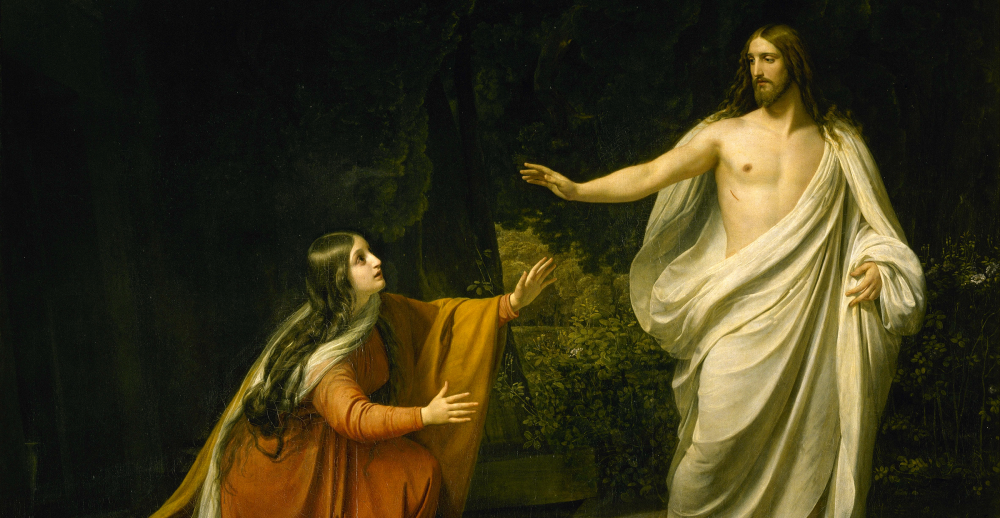
Nunayya is close to Nuni, נוני, which translates as the verb “degenerate,” “atrophy” or “blast” in the Modern Hebrew. This is not entirely dissimilar from the Hebrew meaning of Vesta, וסטה, which, again, means “deviate,” “stray,” “diverge,” “pervert” and “be wayward.” This similarity in word meaning may be meaningful as we count the Vestal virgins as an important precedent for nuns. Such an origin, would in any case, seem to connect the nun class with Mary Magdalene or the proto-Jewish and Jewish esoteric notion of “the Sacred Whore.”
Hence theoretically the title nun would suggest the New Testament prostitute, Magdalene, as much a “model” of the nun class as the Virgin Mary or Mary of Nazareth, the mother of the Jewish Godman. This would make sense as nuns understand themselves as “brides of Christ” as opposed to “mothers of Christ.” Here we see that the “Virgin” Single Mother, bearing the Jewish son, becomes the model. Hence it makes sense that nuns understood themselves as the wives of the Jewish God.
This is critical to understand: Christianity, a Bride Gathering Cult in its origin, posits the mother of a Jew as the most pious type for women. Though certainly with the nun we appear to encounter the complex, astonishingly self-aware, Jewish understanding of sexual purity when it comes to women. Here sexual purity is, actually, racial, compromised through interaction with Jews. What suggests this with the figure of the nun?
The Modern Hebrew word for nun, n’ziyrah, נזירה, is the feminine of naziyr, נָזִיר, meaning “monk,” “friar,” “hermit,” “abstinent” or “anchorite.” The naziyr are also priests appearing in the Hebrew Bible better known in the English as Nazarites. Nazarite means “consecrated one” and comes from the word nazar meaning “consecrate” or “separate.”
In the chapter entitled Delilah: The emasculating and circumcising Jewess this study argues that Nazarites represent pure, abstinent Aryan figures, with Samson (“Man of Sun”) being the archetypal example. The Biblical descriptions of the Nazarite with braided, unshorn hair suggests that they may even be references to followers of the Apollonian Cult or some equivalent as depicted, for example, by the Greek Kouroi statues.
Hence this understanding of the Nazarite as “consecrated” or “separated,” may suggest not merely a separation related to monasticism, asceticism or chastity but also racial purity or racial separateness. The notion of consecration suggests this as well in the Hebrew Bible where Yahweh commands: “Consecrate (qadash)[12] to Me every firstborn male. The firstborn from every womb among the Israelites belongs to Me, both of man and beast.”[13] Here again the firstborn we understand as a common symbol of the Aryan, with the figures of Adam, Cain, Japheth, Esau, all being examples.[14]
Hence it would seem to follow that nuns also represent “consecrated” Aryan figures in the Hebrew and from the Jewish perspective. In this light perhaps it makes sense the medieval church, along with a crypto-Jewish core, was interested especially in attracting virgins especially modeling themselves after the virgin Mary. This is understandable. Here we are reminded as well of the Hebrew word qodesh, קֹדֶשׁ, which means “apartness,” “sacredness,” and “sacrificial” and is used to describe, for example, the “clean sacrificial animals” and inner sanctum of the Tent of Meeting to which they are led.[15]

As pointed out in the chapter entitled Jewish Notions of “Cleanliness” and “Holiness:” The Aryan as “Discharge,” “Leprosy” and “Holy” Prostitute in the first book of this study, qodesh is also the root of the closely related qadosh, קָדוֹשׁ, meaning more simply “sacred” or “holy.” Interestingly qodesh is also the root of qadesh, קָדֵשׁ, meaning a “male temple prostitute.” It is also the root of the feminine equivalent qedeshah, קְדֵשָׁה, a word that means “whore” in the Biblical Hebrew.
In the Modern Hebrew, the Biblical word for whore, qedeshah means simply “holiness” or the verbs “sanctify,” “consecrate,” “hallow” and “bless.” The Biblical Hebrew word for male temple prostitute, qadesh, means simply “holy” in the Modern Hebrew. Again, we may take it as suggested that the nun represents not merely Mary the “single mother” of Jesus but Mary Magdalene, the sacred whore. But, again, according even to a Jewish understanding, the woman or at least the Aryan woman becomes a whore through interaction with the Jew. This is the Triple Goddess descending into the Semitic underworld, as this study discusses.
[1] See the chapter entitled The Origin of the Semitic Bride Gathering Cult called Judaism in book #1 of this series.
[2] Scholiast on Apollonius of Rhodes ii. 722
[3] See the chapter entitled Baptism and Anointing: Symbols for Copulation and Sexual Interaction in book #3 of this series.
[4] See the chapter entitled Easter as Corroborating Evidence for Sin as a Form of the Jewish God in book #2 of this study.
[5] See the chapter entitled Easter as Corroborating Evidence for Sin as a Form of the Jewish God in book #2 of this study.
[6] Galilee is discussed in multiple places in this study. See the chapter entitled Christian as an Impressionable Golem, Christianity as a Burden in book #3 of this study and the chapter entitled Controlling Logos by Eating the Ears of Lions in book #1 of this study and the chapter entitled The Women of the Galilee in this book.
[7] See the chapters entitled Bread as an Important Example of the “Consumption Motif” and “Blood Magic” and Wine in book #3 of this series.
[8] See the chapter entitled The Holy Name of Mary in book #3 of this series. “Sea of bitterness” is one of the name meanings commonly ascribed to the name Mary.
[9] See the chapter entitled Nomenclature Based Typology in the NT, Jesus as Reference to Joshua, “Esoteric Non-Jews” and Jews as Liminal Types in book #3 of this series.
[10] See the Chapter entitled The Elements of Water and Wood as Symbols of Aryan Blood in book #2
[11] See the chapter entitled Fresh Water Fish as Symbol of Aryan Stock in book #3 of this series.
[12] Qadash, קָדַשׁ, meaning “to be set apart or consecrated” is the denominative verb from qodesh, קֹדֶשׁ meaning “apartness” or “sacredness.”
[13] Exodus 13:2
[14] See the chapter entitled Aryans as Firstborn, Jews as Second Born in book #2 of this series.
[15] See the chapter entitled Scapegoat and “Burnt Offering” as Aryan in book #1 and the chapters that follow.
One thought on “Possible meanings and origins of the word Nun”